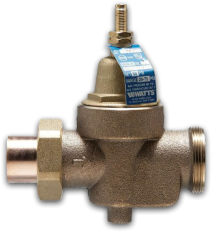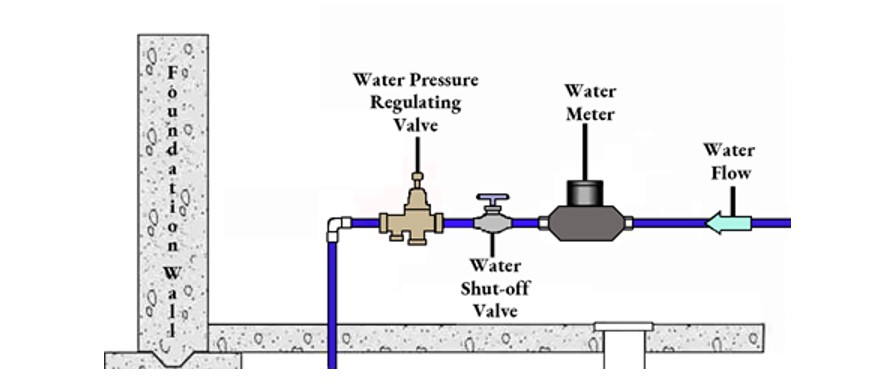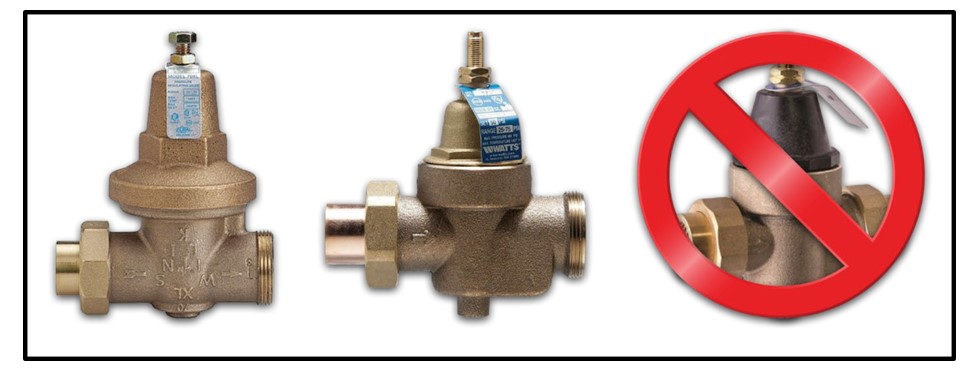
Homeowners may not realize that every home in the WCID No. 17 service area is required to have a Pressure Regulating Valve (PRV) installed. Due to the fact that water pressure within the Texas Hill Country is largely influenced by the uneven geology of the terrain, water pressure in distribution mains can range anywhere from 55 to more than 150 pounds per square inch (psi) depending on the elevation in the area. In WCID No.17’s highest pressure areas, the District has installed in-line pressure regulating valves to reduce pressure, however these valves can sometimes fail (as all mechanical devices will), and therefore the District requires property owners to install individual pressure regulating valves (PRVs) at their homes.

Your home’s PRV can be easily found on the homeowner side of the meter box, after the shutoff valve. The District requires PRVs to include a built-in thermal expansion bypass and be constructed with an all-brass body and top as other materials such as aluminum or plastic have proven to deteriorate quickly in the soil. We highly recommend you carefully scrutinize the PRV your home repair professional or plumber suggests installing to ensure it meets this standard.

Because water pressure higher than 80 psi could result in damage to your home’s plumbing, we at the District strongly encourage you to inspect your PRV annually as it is a vital component of your home’s plumbing system. Proper operation of the PRV can help to ensure the long-term safety of many home systems from water softeners, to water heaters, to your piping, fixtures and appliances. You should be checking regularly to make sure your PRV is working properly and no leaks or malfunctions are present. If your home’s water pressure suddenly drops or becomes extremely high, the PRV should be checked immediately.
 |
To check whether your PRV is functioning properly you begin by installing a home water pressure gauge on an outdoor spigot. These are commonly sold at big box stores typically for less than $20. Turn on the spigot once the gauge has been attached and record the pressure reading. On the PRV adjustment bolt, make a mark of the original setting and then turn it in either direction to increase or decrease the pressure allowed and turn on the spigot for a reading. Then return the PRV adjustment bolt to the previous set point and if the pressure has returned to the original reading, then the PRV is functioning properly. If the reading has not returned to the original reading, then the PRV should be replaced with a new one. Please watch this video for more information: What is a PRV and Why is it Necessary? |
The required type of PRVs may be purchased at any home improvement store for$90 – $200 and can be installed by homeowners with a moderate level of home maintenance knowledge. For professional installation, the District has researched the reasonable cost for a professional plumber installation to be between $400 – $1200 for materials, labor and equipment depending upon the style of PRV selected. For quotes exceeding this price range, the District suggests getting quotes from multiple plumbers for comparison. The District suggests the labor time of about an hour as appropriate to complete the replacement in most circumstances.
